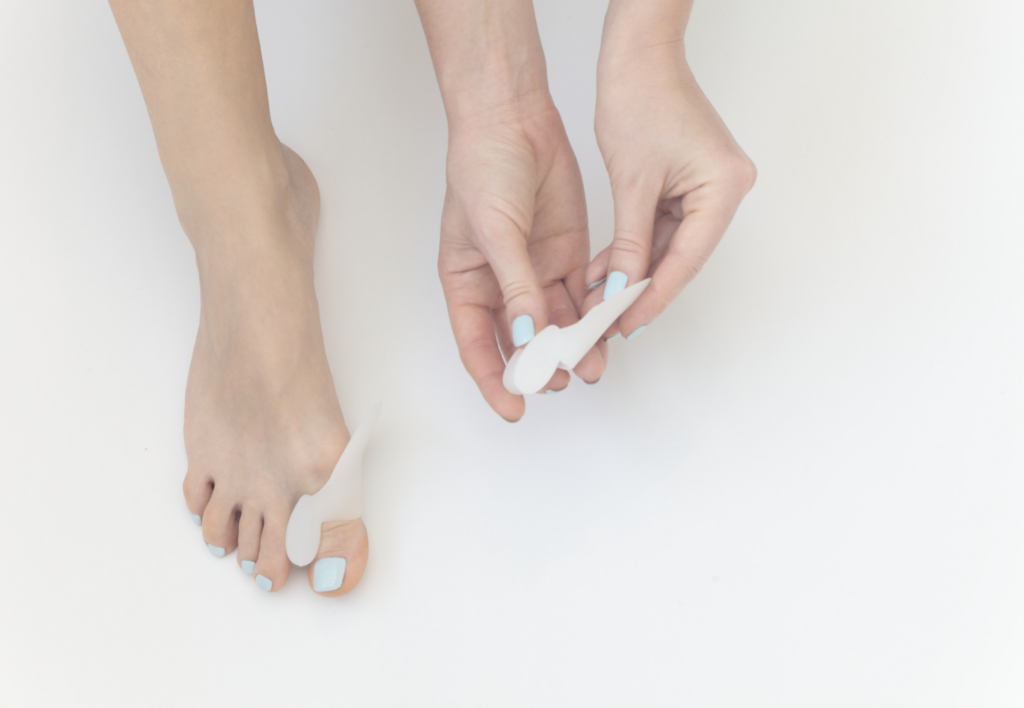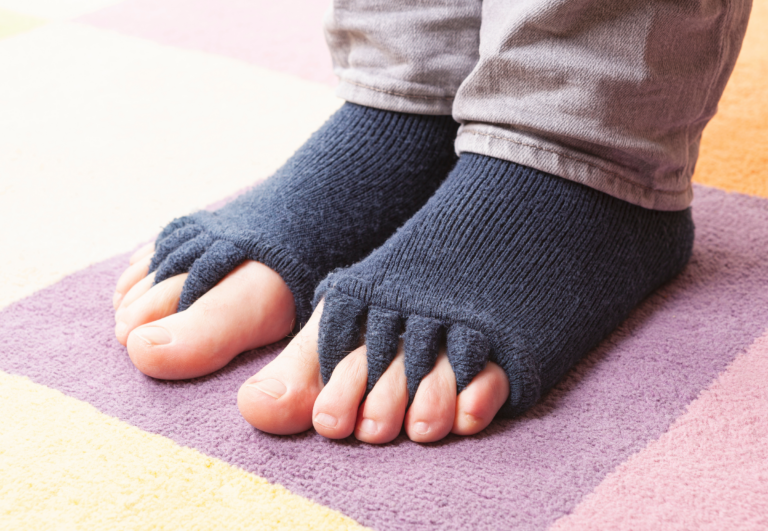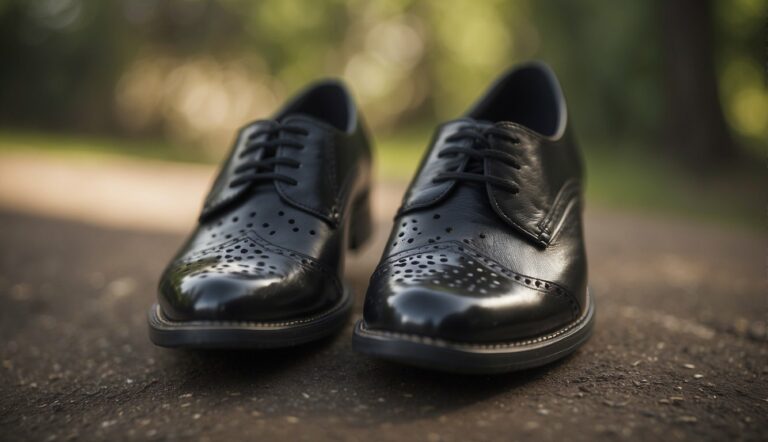Toe Spacer Instructions for Beginners: A Step-by-Step Guide
Toe spacers are simple yet powerfully effective tools for individuals looking to alleviate foot pain and restore natural toe alignment. As someone who has extensively used toe spacers, I can attest to their benefits, particularly for athletes and people who spend a lot of time on their feet. The concept behind toe spacers is to gently separate the toes to counteract the compressive forces of tight shoes and to reinforce the natural toe spread that can be lost over time.
Implementing toe spacers into your daily routine can be a game-changer for foot health. The consistent use of these devices can improve balance, strengthen foot muscles, and even reduce the risk of injuries by promoting correct foot posture. Beginners should start with shorter periods of wear, gradually increasing the time as their feet adjust to the spacers. Remember to choose the right size and material for your spacers, as comfort and fit are crucial for effectiveness and compliance.
Getting Started with Toe Spacers (Step-by-Step Instructions)
When using toe spacers, it’s essential to prioritize both size and comfort to avoid discomfort and maximize the benefits. Let’s explore how to select the proper size and the correct way to wear them.
If you’re new to using toe spacers, here’s a beginner-friendly step-by-step guide to help you get started:
1. Selecting the Right Toe Spacers
Choose toe spacers that are appropriate for your foot size and made from a comfortable, flexible material. Silicone is a popular choice due to its durability and ease of cleaning. Ensure that the spacers are not too tight or too loose, as they should provide a gentle stretch without causing discomfort.
Choosing toe spacers that fit well is crucial for both efficacy and comfort. The size of the toe spacer should correspond to the widths of your toes so that it can provide gentle, even spacing. You want to avoid a fit that’s too tight as it can cause pain, but also one that’s too loose, as it won’t hold your toes in the right position. For the big toe, which is typically larger, ensure the spacer accounts for its size difference.
2. Cleaning Your Feet
Start with clean, dry feet to prevent any bacterial buildup and to ensure the spacers stay in place without slipping. This step is crucial for maintaining foot health and hygiene, especially if you plan to wear the spacers for an extended period.
3. Properly Positioning the Spacers
While seated, carefully insert the toe spacers between each toe, starting from the big toe and working your way to the little toe, or vice versa. They should fit snugly but not be forced in. The spacers should push your toes gently apart to their natural alignment.
Wearing toe spacers properly is as important as selecting the right size. They should sit snugly between your toes, pushing gently apart without forcing them. The spacer should rest against the base of each toe; if it’s positioned too high, it won’t support proper alignment. Start by wearing them for short periods to allow your toes to adjust to the correct toes’ alignment, then gradually increase usage as comfort allows.

4. Starting with Short Sessions
For beginners, it’s important to wear toe spacers for short periods, such as 10-15 minutes, to allow your feet to get used to the new sensation. This can help prevent any potential discomfort or injury from overstretching the toes too quickly.
5. Gradually Increasing Wear Time
As your feet adapt, slowly increase the time you wear the toe spacers. You might add 5 minutes to each session or wear them for longer periods every other day. The key is to listen to your body and only progress as comfort allows.
6. Listening to Your Body
Toe spacers should never cause pain. If you experience discomfort, reduce the wearing time or discontinue use. Some slight tension is normal, but pain is a sign that your toes need a break or that the spacers may not be fitted correctly.
7. Consistency in Use
To achieve the best results, make wearing toe spacers a regular part of your routine. Consistent use can help improve toe alignment, relieve pressure, and promote better foot health over time.
8. Cleaning the Toe Spacers
Keep your toe spacers clean by washing them according to the manufacturer’s instructions, typically with soap and water. Regular cleaning prevents the buildup of bacteria and extends the life of the spacers.
9. Seeking Professional Advice When Necessary
If you have existing foot issues or experience ongoing pain while using toe spacers, consult with a podiatrist or other foot care specialist. They can provide personalized advice and ensure that toe spacers are appropriate for your specific needs.
Incorporating Toe Spacers in Daily Life
Toe spacers can be an excellent addition to one’s daily routine to help maintain proper toe alignment and promote foot health. They can be particularly beneficial when integrated smoothly into everyday activities and combined with the right type of footwear.
During Daily Activities
When incorporating toe spacers during daily activities, start by wearing them for short periods while at home. You might begin by using them during a morning routine or while doing household chores. Gradually, you can increase the duration as your toes adjust. It’s important to monitor your feet for any signs of discomfort or pressure points.
- Walking: Integrate toe spacers into your walking routine by using them inside wide-toed barefoot shoes. This combination enhances the natural toe spread.
- Socks: Choose non-restrictive socks that accommodate toe spacers and do not compress your toes, ensuring maximum benefit and comfort.
Combining with Footwear
Selecting the right shoes to wear with toe spacers is crucial. Look for shoes that offer a wide toe box, allowing your toes to remain in a natural position without squishing.
- Barefoot Shoes: These types of shoes are ideal for toe spacer use due to their wider toe box and minimalist design.
- During Work Hours: If your job involves extended periods of standing or walking, wearing toe spacers with compatible shoes can help keep your feet comfortable.
Remember, the key to successfully incorporating toe spacers into your daily life is consistency and ensuring they are paired with appropriate footwear. With time and regular use, you’ll find that toe spacers become a comfortable and beneficial part of your daily routine.
Different Materials and Types
Materials:
- Silicone: Silicone toe spacers are durable and offer a balance of flexibility and firmness. They’re washable, reusable, and, importantly, hypoallergenic, making them ideal for most users seeking long-term comfort.
- Foam: Foam toe spacers are soft and cushioning, suitable for individuals who may find silicone too rigid. However, they generally have a shorter lifespan as they can break down quicker with regular use.
Types:
- Single Toe Spacers: These separate individual toes and are generally smaller, targeting specific areas of discomfort.
- Full Foot Spacers: A comprehensive option designed for those needing alignment for all toes. They tend to be more supportive and are beneficial for extensive realignment.
| Material | Comfort Level | Durability | Use Case |
|---|---|---|---|
| Silicone | High | Long-lasting | Long-term, regular use |
| Foam | Very High | Short-term | Immediate, temporary relief |
In my experience, it’s important to consider both the material and type of toe spacer to align with your specific needs. The right choice can make a significant difference in the comfort and effectiveness of the product.
Care and Maintenance
Ensuring your toe spacers remain clean and in good condition is crucial for foot health and hygiene. Regular maintenance prevents the build-up of bacteria and helps extend the longevity of the product.
Cleaning Your Toe Spacers
I always tell beginners that washing your toe spacers after each use is imperative to maintain their efficacy and prevent any health issues.
You should use warm soapy water to clean them thoroughly, rinsing them well to remove all soap residues. After washing, dry them completely before their next use. Avoid using harsh chemicals as they can degrade the material of the spacers.
- Wash: Warm, soapy water
- Dry: Thoroughly, before next use
- Avoid: Harsh chemicals
When to Replace Them
It’s important to keep an eye on your toe spacers for signs of wear and tear. If you notice any changes in texture, shape, or material integrity, it’s safe to consider getting a replacement.
Typically, if used daily, replacing toe spacers every six months is a good rule of thumb, but always consult with a healthcare professional if you’re unsure when to replace them.
- Check for: Wear, tear, texture changes
- Replace if: Compromised shape or material
- Typical replacement: Every six months (or as advised by a healthcare professional)





